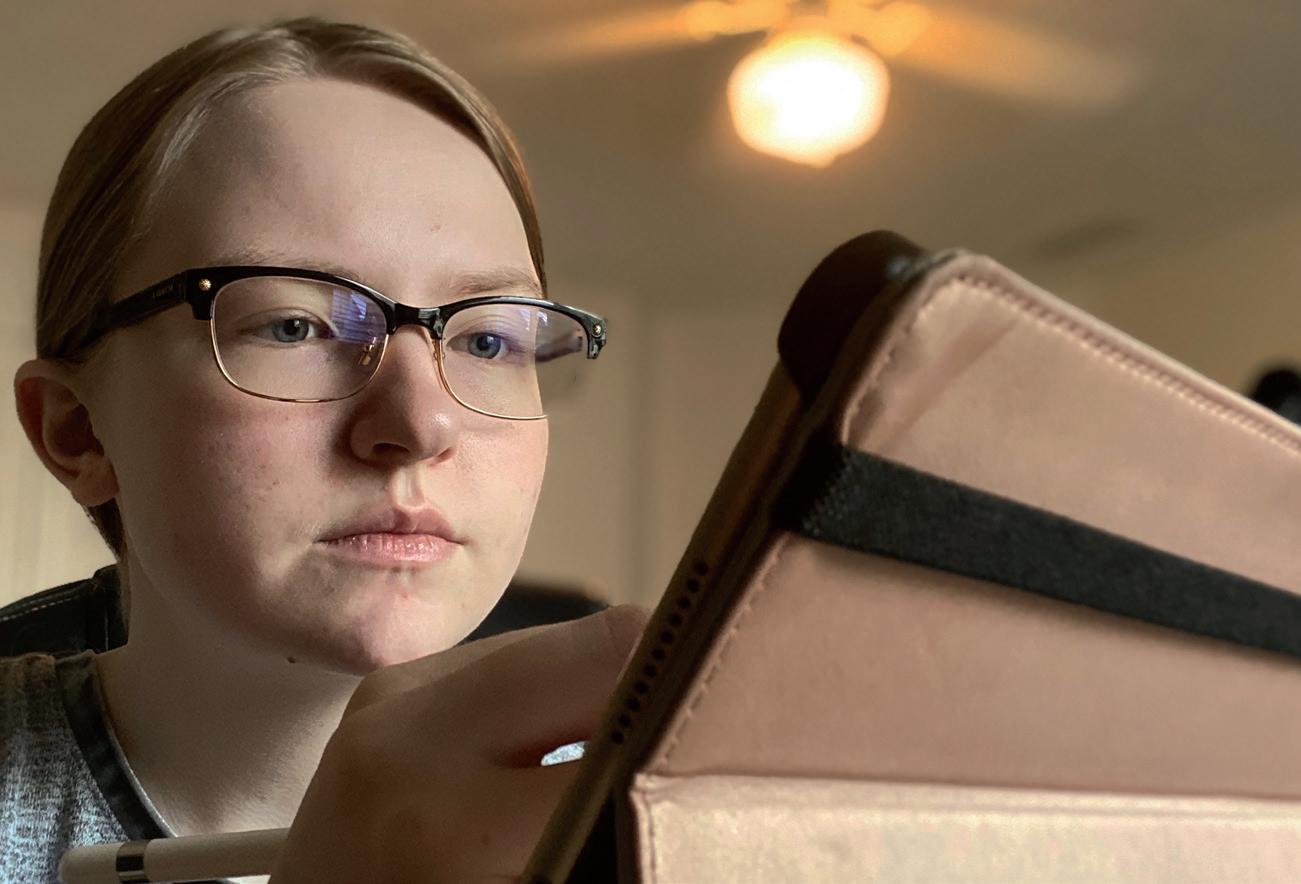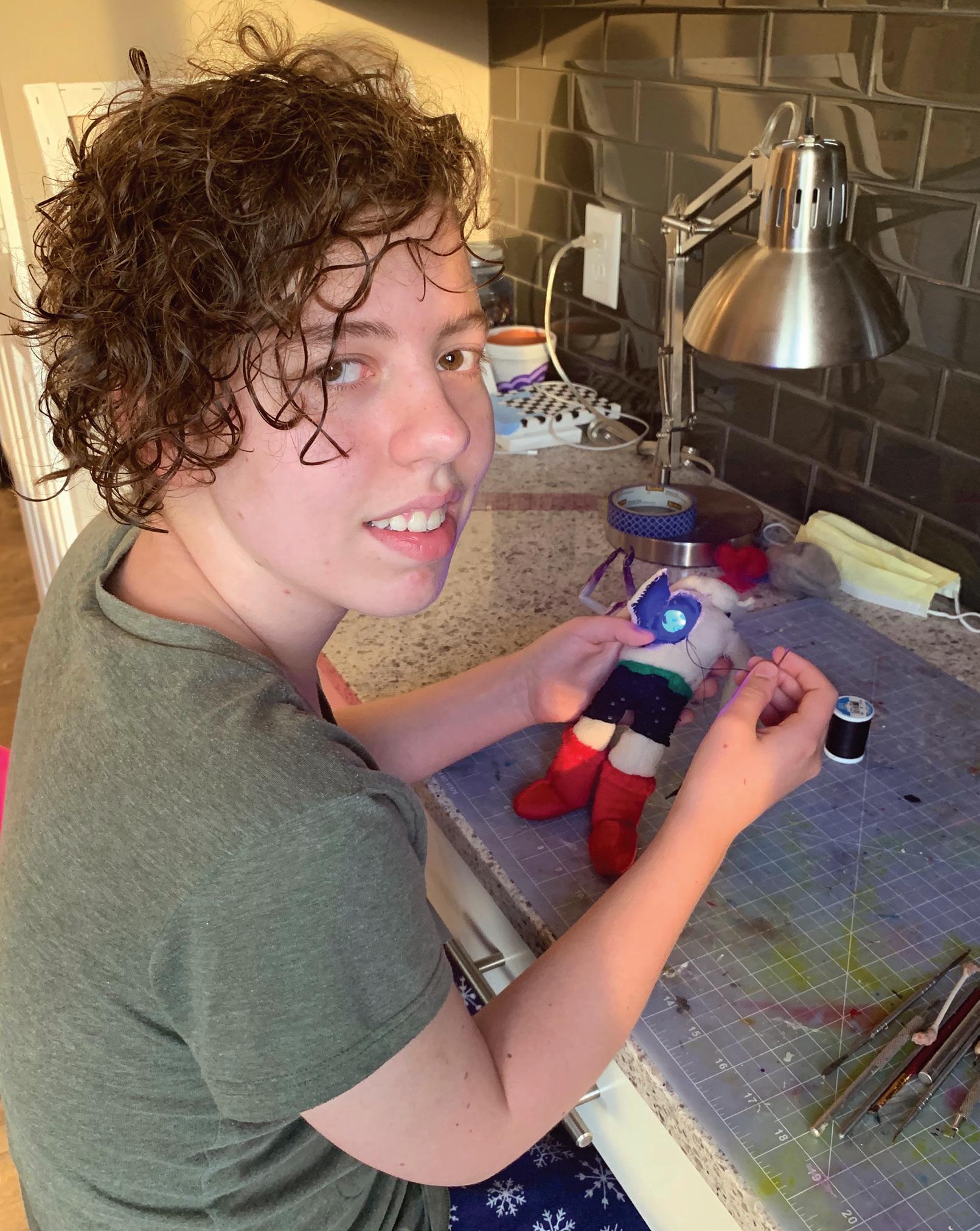
5 minute read
THE ART MUST GO ON
from 8.13 Issue
by HiLite News
Students practice art to find structure, emotional outlet amidst COVID-19 outbreak
CHRISTIAN LEDBETTER STORY AVERY SLIFER, RILEY DUGAN SUBMITTED PHOTOS
Advertisement
Students entering the summer of 2020 had limited ways to pass the time. The gradual chipping away of lockdown orders for Gov. Eric Holcomb’s fivestep plan certainly gave students flexibility throughout June, but the effects of COVID-19 had not yet passed. Many had to get creative, which is exactly what junior Avery Slifer did.
Slifer said that quarantine gave her more time to work on her art of illustration, sculpture, fabric and resin as well as get over her bad art habits such as never finishing projects. She said for her, this extra work has helped get through the past summer where lockdown, police brutality and civil unrest had occupied headlines.
“(Art has) kind of given me an outlet; I’ve definitely done some darker stuff. It also kind of gives me a little bit of light at the end of the tunnel,” she said.
Junior Riley Dugan said she agrees. “I don’t know what I’d do
DID YOU KNOW?
Putting thoughts and feelings into a physical creation promotes healthy coping skills and self awareness. This type of therapy can prevent verbal recollection of traumatic memories.
AMERICAN ART THERAPY ASSOCIATION SOURCE without art. It’s a perfect way to escape and a great hobby to dedicate time to,” she said via text.
Jennifer Bubp, art teacher and department chairperson, said she understood such developments.
“Art provides healing and tranquility to people who need a quiet space to process their feelings,” she said via text. “It is a tangible way to think through the troubles of this life. It provides a voice when words aren’t adequate.”
From Victor Hugo’s critiques of industrial life and Paul Revere’s engraving of the Boston Massacre, artists have always processed their feelings on current events through their work. Many students may have seen the now iconic mural dedicated to George Floyd, portraying him in front of a sunflower displaying the names of other victims to police brutality. This work by artists Cadex Herrera, Greta McLain and Xena Goldman has appeared on news clips and all over social media but is only one example of artworks inspired by
KEEPING IT LIGHT:
Junior Riley Dugan creates art on an iPad Pro. Dugan said that for her, art is a more of a lighthearted, casual way to pass time. She said art allows her to put whatever is on her mind onto a physical, palpable portrayal.
Art provides healing and tranquility to people who need a quiet space to process their feelings. It is a tangible way to think through the troubles of this life.
societal issues brought to light by contemporary events.
Slifer said since June she had seen her work take on darker themes than normal. For her, she said making such art served as a vehicle for venting her frustration at the events that transpired in 2020. “One of my recent pieces was a really badly done acrylic painting and it said ‘God is Dead’ just because with everything going on, that’s kind of what I was feeling,” she said.
Dugan, however, said she had not seen such a change in the subjects of her pieces.
“Recent events definitely had (an) effect on my life and I do care about them but surprisingly, it has not influenced my art,” she said. “I may have to try more meaningful projects sometime but right now, it’s just silly
16
To see more about how CHS students continue to adapt to the COVID-19 outbreak, read a story on Page 16 about how fall sports schedules are readjusted and how players are easing back into the school year from an elongated break
doodles of musicians and various cool monster people because that’s what cheers me up after a long day.”
The difference may lie in their various uses of art. While Slifer said she used art as an “outlet”, art for Dugan was a “nice hobby to pass the time.” However, both said art provides a structure when school isn’t in session.
Such structure, however, can’t be achieved without deadlines and other forms of accountability. According to an article by The Guardian, deadlines not only assure that work gets done but they often improve performance. Something that Slifer took advantage of with deadlines of her own.
She takes advantage of other motivations as well such as the idea of the finished product among others. “My dad is an artist as well, he works in a different field, but he gives me a lot of good critique. I don’t have a specific she can make progress on projects Additionally, according to motivation. I just want to get this done without being told to. This, she said, is Bubp, art ultimately implements a to prove to myself that I can do stuff also accomplished through frequently sharpening of different senses. like this,” she said. jumping between projects. “Do mulBubp said, “Focus and concen
Slifer said she has wanted to make tiple projects so you don’t get pigeontration (from being artistic) provide progress through her art to prove that holed into one,” she said. clarity for all aspects of life.” H SPEAK-UP! Does art work as a coping mechanism for stress for you?

SOOTHING STRESS BY SCULPTING:
Junior Avery Slifer poses for a photo while working on a sculpture during her summer. Slifer said external sources and inspirations help her find a routine to satisfy her creative needs. She also mentioned that the extra time from quarantine helped her in multiple ways.
EMILY CARLISLE SPEAK-UPS, GRACE MEYER, KATHLEEN LEMME SUBMITTED PHOTOS “During the school year, I always make sure to take one art class per semester. I feel like having an art class in my curriculum gives me a place to forget about all the stress of my other classes for 90 minutes. Senior Grace Meyer


“I mainly use art as a distraction, especially when I’m stressed out. It helps me forget about everything and calm down at least for a little bit. I love to paint; that is my favorite way to de-stress, but I color sometimes too.” Junior Kathleen Lemme






